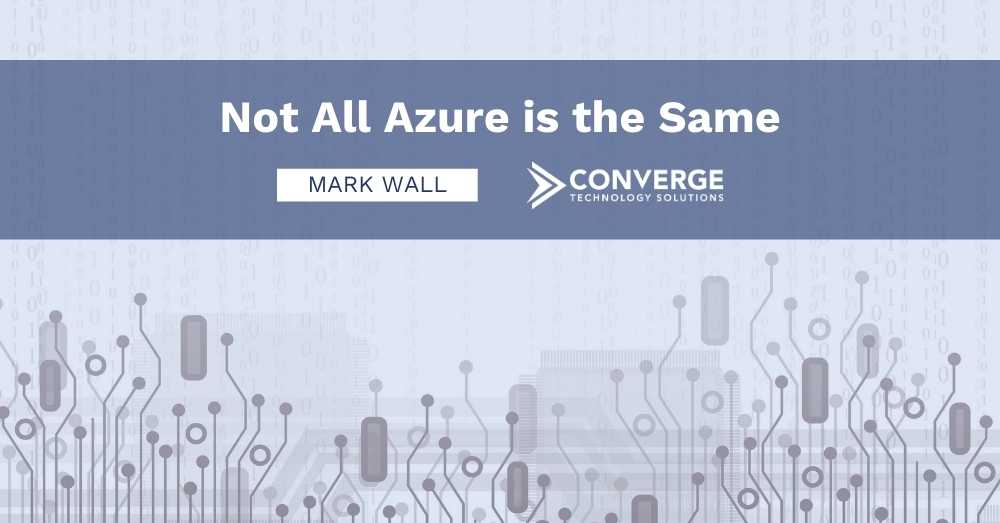We all know Microsoft licensing can be more complicated than quantum mechanics. I sometimes believe just looking at product use rights causes the terms to change. So, if for no other reason, a move to Azure might make sense because it eliminates most licensing nightmares and surprises.
Although there are substantially fewer licensing issues with Azure, Microsoft still provides plenty of fluffy looking mines for you to unwittingly bump into on your cloud journey. One of the most common cloud mines we run across with our customers explodes when they take advantage of Microsoft’s benevolence by spinning up a free Azure Trial. What could be bad about getting a month of compute, storage, or AI/ML for free you ask? Well, on the surface, nothing. If you are indeed treating the trial as a trial, then there’s nothing to worry about!
The problem, which I’ve seen happen numerous times, starts when that trial gets used for production. See, trial Azure tenants are always setup under the pay-as-you-go model, and it’s tied to the credit card that’s kept on file. Once you pass the 30-day window, you’ll start seeing more and more charges as your Azure consumption grows. That may not be a big deal for smaller footprints, but I can’t think of too many people who want credit card-based billing when that monthly charge gets into the $10,000+ range.
“So, just change over to a great CSP partner like Converge, and all your problems will be solved!” If only it were as simple as that. Now we risk hitting another mine. Pay-as-you-go Azure tenants cannot be moved with a magic wand; some level of manual migration is required to move data from that subscription to a new one. Some resources can be easily moved, but the ones that cannot be easily moved must be deployed anew in the CSP subscription. You will have downtime, and the amount of outage is fully dependent on what types of resources or services are being utilized within the source subscription(s). Some resources (ARM-based, independent VMs, etc.) move easily with little (if any) downtime. Others, and nearly all third-party resources, won’t “move” at all and must be redeployed.
The risk of migrating workloads and the likely downtime of applications rightfully should give you pause. Why then even consider making the change to a CSP program? The answer lies in the tremendous value of Azure CSP subscriptions. Let me list the ones I feel are the most important:
- Better cost management – Your CSP partner should take the brunt of making sense of the consumption data coming in from Microsoft and consistently advise you on how to reduce the cost of your Azure subscriptions.
- Payables management – Having a simple monthly invoice and not having to deal with credit card reconciliations/justifications is nice and easy to deal with.
- Support – Your CSP partner should have a strong bench of support engineers as well as Microsoft Premier support attachment available for rapid escalation of any issues.
- Lower consumption prices – When running under pay-as-you-go subscriptions, you pay the retail pricing of all the services you consume. CSP partners can provide discounted pricing depending on the specific services you need and total consumption.
Given the known value add and concerns of switching Azure subscription types, Converge has developed a process and toolset to successfully migrate pay-as-you-go subscriptions to our Azure CSP subscriptions while keeping downtime and timelines as short as possible. When you are ready to stop billing to your cards and looking at the Microsoft Azure invoice/consumption data, Converge is ready to make the switch as painless as possible.
Now that I’ve laid it all out in detail, let’s take a look at the highlights:
- CSP pay-as-you-go is not the same as credit card pay-as-you-go, and the differences are not only related to how you are billed.
- Where possible, only setup an Azure trial when you know it will stay a trial, and don’t let anyone change your mind about it.
- Even if you are only trying something out, work with a great CSP partner to setup your Azure subscription so you don’t hit the cloud mine of required migration later. It’s easier and cheaper to spend the $150 you would have saved with the “free” trial than it is to have to blow up your deployment down the road.
- If you are one of the many unlucky people who hit the free trial mine and need to recover from the blast, finding a CSP partner is the best way to get out, and then you can reap all the benefits we talked about earlier.
Don’t hit the mines. If you’re interested in Azure and the benefits it offers, make sure you’re getting the most out of what you’re spending with a good CSP partner.





